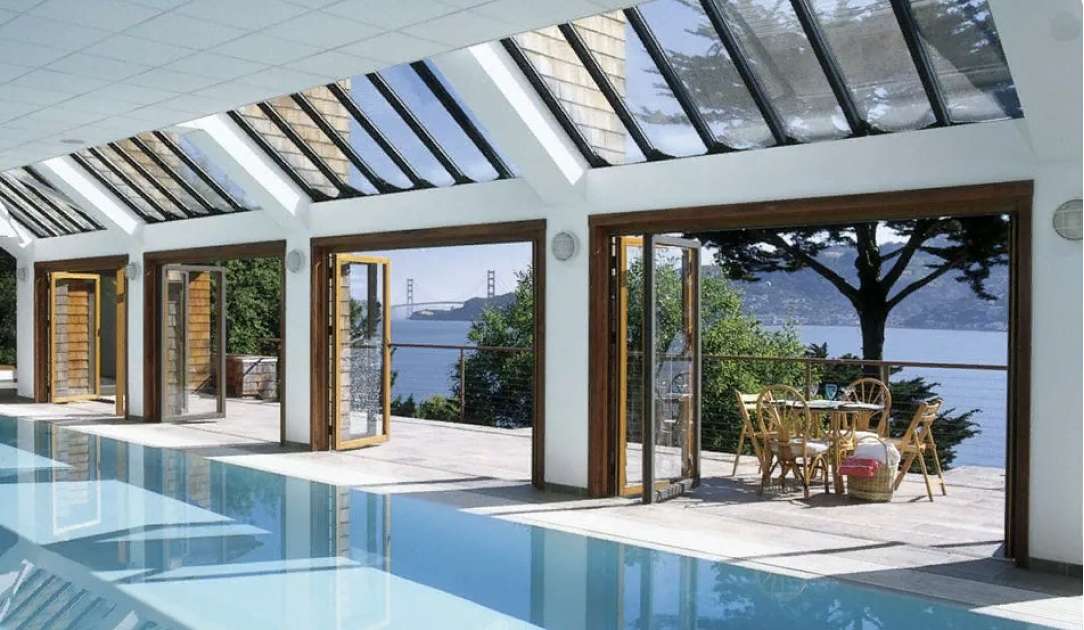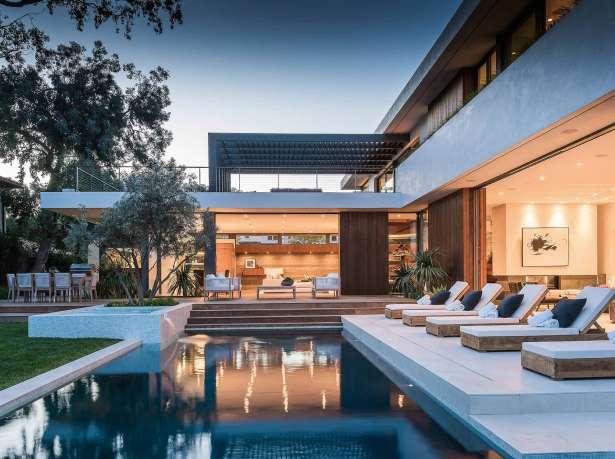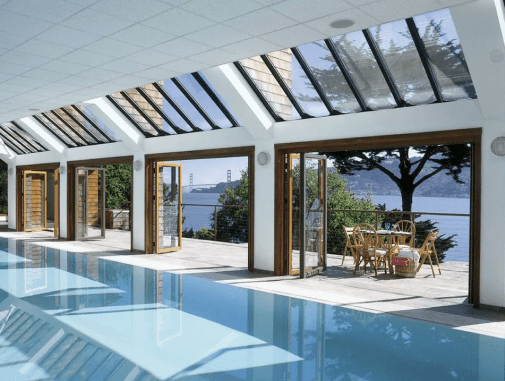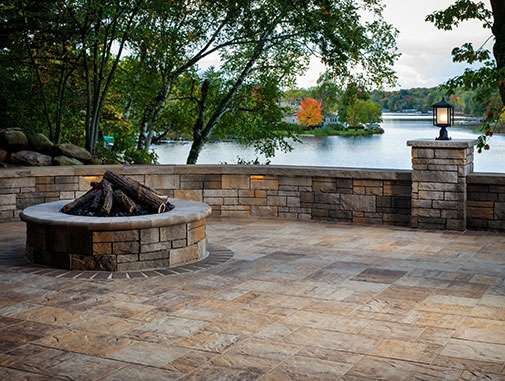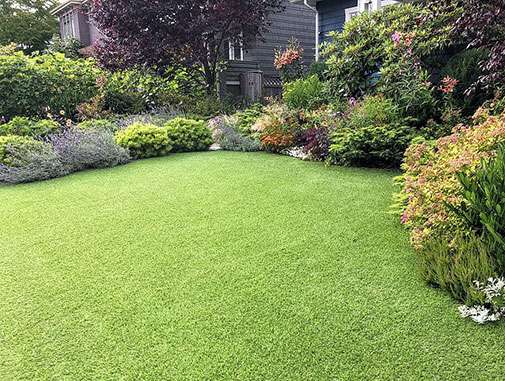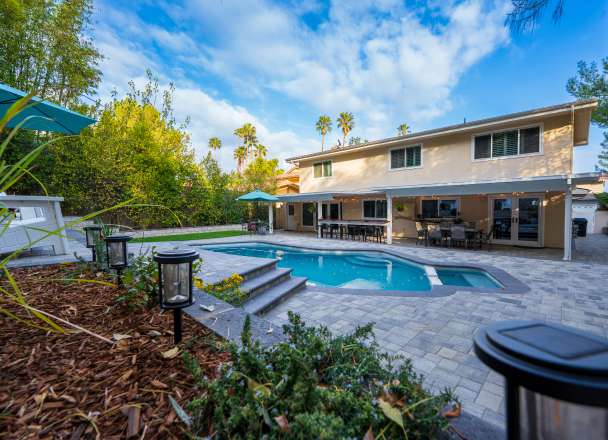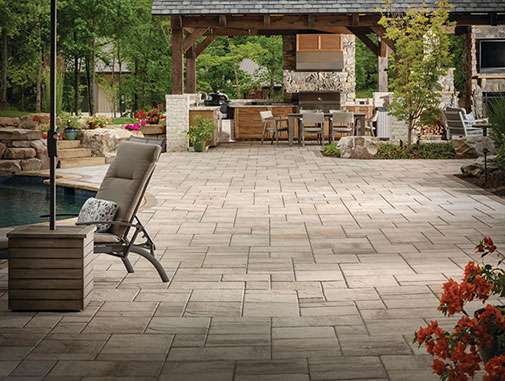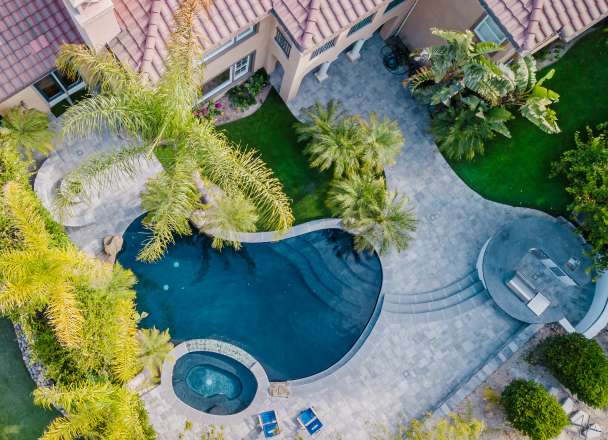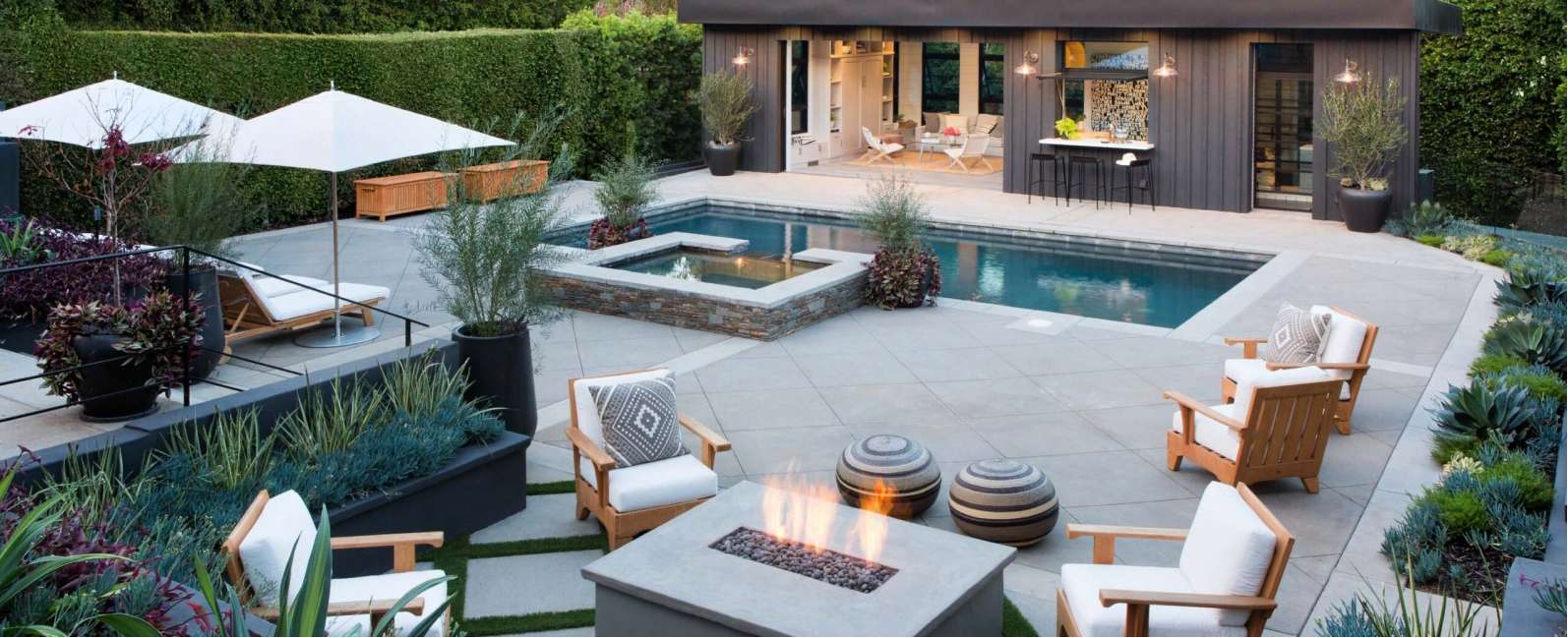ADU News in Los Angeles – October 2024
- #Outdoor Living
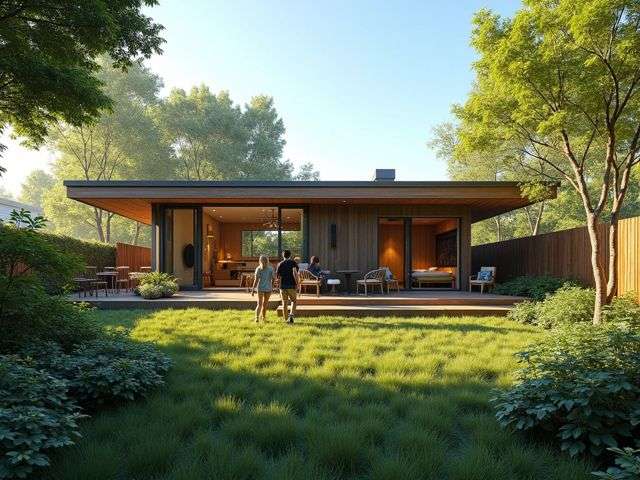
- Smooth Plaster Finish
- Shimmering Pebble Finish
Westwood in Los Angeles saw a duplex transformed into a triplex with a new ADU, highlighting ADUs’ potential to address urban housing issues. Meanwhile, legislative changes for ADUs are underway, impacting compliance and development opportunities.
Westwood Triplex Transformation with ADU

In October 2024, Los Angeles’s Westwood neighborhood witnessed an inspiring housing project illustrating the innovative potential of accessory dwelling units (ADUs). A former duplex, owned by 96-year-old Isabel Janken, has become a triplex with the addition of a thoughtfully designed two-story ADU. The brainchild of LA-based architecture firm conti|nua, this project is not only a housing transformation but also a story of resilience and vision.
Isabel worked with architect Melissa Shin to turn this idea into reality. They faced several challenges, such as getting the project approved by the Los Angeles Department of Water and Power and managing late contractors. The new ADU, with an appearance more like a modernist sculpture than a typical building, nestles between two structures like a bookend. It has a kitchen, a living area, and a private outdoor terrace on top, which is complemented by a parking pad beneath. The whole design is a modern reinterpretation of what it means to live in an ADU, maximizing every inch of space while fitting seamlessly with its original structure.
“Build the small, not the big” has become a guiding principle when it comes to ADUs.
The addition is not just an architectural marvel. It also exemplifies Isabel’s progressive vision, which goes beyond promising to rent out the unit and into creating a lasting home for future occupants. Expected to go for somewhere between $3,500 and $4,000 a month, the unit is also a way of addressing the density and housing shortages of a bustling city like Los Angeles.
ADUs are increasingly seen as a way to offer sustainable living solutions. They are adaptable and smart housing solutions, aligning more with that city’s character than a typical box would. These are not the only reasons real estate enthusiasts and homeowners are excited about ADUs, though. Resembling a popular mannerism in the design world, “build the small, not the big” has become a common phrase when it comes to ADUs.
Backyard ADU for Airbnb Provides Lessons and Controversy
Krista’s path to creating a 499-square-foot ADU in her Los Angeles backyard is a winding one filled with twists and turns. Like many homeowners in California, Krista was looking for a way to monetize her property. She began the project with the intention of transforming her garage into an ADU. For several months, she worked to achieve that goal, doing much of the work herself and with friends. However, Krista did not get the necessary permits (partly because one is apparently required for a former garage door to be reconfigured into an entrance to an ADU; who knew?), and midway through the project, Krista received a cease-and-desist order from the city of Los Angeles.
“These are the folks we really want living here. If they’re not being priced out and kicked out, then ADUs might be serving the community and the local housing market just fine.”
The narrative brings to light the surging appeal of accessory dwelling units as a sensible solution for the housing crisis, one that also allows homeowners to harvest some extra income. Krista’s strategic choice to keep her unit under 500 square feet to bypass extra taxes showcases the intricate planning involved in ADU construction.
The project’s success hasn’t shielded it from criticism. Detractors contend that projects like Krista’s ADU contribute to the rising cost of living and do not serve to bolster the amount of housing available in the community—especially the kind that is affordable—that is meant to be accessible to locals.
Both regulations and the people who live by them can sometimes seem as if they’re in a never-ending tug-of-war. Krista’s experience demonstrates what can happen when you lose a pull. It not only provides a few cautionary-yet-interesting tales, but also addresses a serious concern that underlies the whole issue. That concern is about the balance, or trade-off, between what you might call individual liberties and community values. Krista’s journey offers practical advice for those considering similar projects while questioning the balance between personal financial gain and community impact.
Construction Industry Insights from October 2024

In October 2024, significant changes are afoot in the construction landscape of Los Angeles, with a number of important indicators revealing trends that affect Accessory Dwelling Unit (ADU) projects.
The construction costs of replacing the nation’s lead pipes may seep into the expenses associated with constructing accessory dwelling units in Los Angeles. The projected federal timeline for the pipe-replacement effort is 10 years, which dovetails nicely with the just-granted (but surely unwelcome) 10-year deadline for replacing lead service lines given to the EPA (and authorized under the 2021 infrastructure law) to come up with a plan and start making the replacements.
“The reports from August 2024 and prior months provide ample detail on the data’s implications—especially for the construction sector. They reveal unambiguous trends regarding the cost of materials, labor availability, and spending across the economy.”
These economic indicators tell a compelling story. All of these direct and indirect effects are influencing the decision of what types of buildings to construct, where to construct them, and in what manner to go about that construction—especially for anyone contemplating the construction of an accessory dwelling unit.
Ensuring the safety and well-being of construction industry workers is of utmost importance. Bechtel has taken the lead in an initiative that reflects this focus, and the company has pledged significant financial support for suicide prevention efforts among construction workers. These funding efforts are crucial, not only for reducing the incidence of suicide within a worker population that has too frequently seen this as a viable “out,” but also for the industry as a whole.
The increased use of advanced technologies and safety practices in construction means that opt-in building projects should be safer and more predictable than unregulated ones.
This information highlights how crucial it is to remain knowledgeable and flexible. By taking in the economic and industry alterations, one can make better decisions regarding ADU investments in Los Angeles. Hearing about these changes can also motivate one to do further research and understand why and how these factors affect us.
Sticking with the theme of knowledge is power, let’s look at what kind of power this information gives us. Hearing about these changes impacts our view of the market. It can also impact our perception of ADUs as a smart investment.
Emerging ADU Design Trends in Los Angeles

In October 2024, the very advancements of design for ADUs in Los Angeles come to a head, showing what is possible in the growing push to make LA a more livable city. A project in Westwood, just under the boles of the trees in Griffith Park, displays these possibilities and even some of the potential pitfalls as it goes from concept to reality. From the mind of local architect Melissa Shin, the project takes a four-car garage and utilizes the space with a two-story unit in a way that addresses the parking density as well as the aesthetic concerns that such two-level living units usually have. This project underlines a growing trend in Los Angeles to enhance property utility while boosting tenant comfort. Read more on this project.
The recently constructed ADU includes a complete kitchen, an exclusive rooftop terrace, and elements of modernist architecture. This makes the ADU functional, of course, but its architecture also makes a strong aesthetic statement.
“If your living space isn’t appealing, what are you even doing?”
These designs walk the fine line between satisfying local laws and making the most of the available space, which is what makes the ADU an appealing prospect. That appeal increases when one considers the prospect of turning not-very-inviting garages into somewhere between cozy and spacious living quarters, which is what some of these designers seem to have done, quite ingeniously, with some of the ADUs they’ve produced.
The current design trends for accessory dwelling units showcase a beautiful combination of function, form, and efficiency—simply put: they’re beautiful and creative solutions. They’re certainly not what we picture when we think of tiny houses, and yet, for many homeowners, they’re a very real and very creative solution to the city’s housing shortage.
Navigating Legal Changes in ADU Construction

Recent legislation signed by Governor Newsom sets in motion some significant changes—think Disneyland—for accessory dwelling units in L.A. These changes are set to go into effect starting January 1, 2025. If you live in L.A. and you’re thinking about expanding your home to include an ADU—or if you plan to invest in L.A. real estate and want your potential investment to generate income—then you need to understand the changes in local law that these new state laws are bringing about.
A significant change is embodied in AB 2533, which extends protections to unpermitted ADUs built before 2020. Local agencies must now adapt their ordinances to conform to state protections, or risk having their local laws struck down.
“This is a big deal for anyone with, or thinking about building, a not-up-to-code ADU.”
These changes likely mean much more stability for these structures, but details matter, and we don’t know yet how some of the new laws will shake out.
SB 1211 changes the rules for required parking and allows for more detached accessory dwelling units to be placed on lots with existing multifamily housing. This is a smart way to use the law to address the housing shortage. By increasing the density of housing in some areas, SB 1211 allows for a bit of creativity to come back into the process of building. It lets builders mix up the multifamily housing type a bit while still keeping it within the parameters laid out in the new rules. Builders can explore more creative ways to enhance their properties while complying with the new rules.
Senate Bill 1077 pertains to the California Coastal Commission’s recent order to provide clearer and more specific guidelines for accessory dwelling units in the Commission’s jurisdiction. This matters to us because it’s about the specialized coastal room we live in, with our own environmental and land use priorities.
Not only do these updates support the trending popularity of Accessory Dwelling Units (ADUs) but they also dovetail with the ethos of EHD Builders. That is, we are about much more than just sticking to the code. We are about using innovative solutions to deliver your construction vision. So, when it’s time to deliver an ADU that meets your needs and the law’s needs, EHD Builders is ready to take on that challenge. Go to our portfolio to see what else we are up to.
The changing world of law offers a lot of new options. For an ADU, personally built or professionally invested in, to comply with today’s law is almost a prerequisite for its success. If you want to navigate the seas of legal compliance well, you need to consult a detailed map. We have one that you might find helpful. It covers key points and many ADU-relevant regulations. For detailed insights on compliance, explore our guide on legal matters and ADU regulations. It will also help you make informed decisions about how to finance your ADU, if that’s a route you’re considering. Consider our financing options and free estimate services.
FAQ
What transformation took place in Westwood with an ADU addition?
A former duplex in Westwood, Los Angeles, has become a triplex, now featuring a new two-story accessory dwelling unit. This conversion would not have been possible without the creative serendipity of Isabel Janken and architect Melissa Shin.
“Their solving of old and new access issues, plus the modern marvel of handrailing, has allowed this unit and its kitchen and living spaces to exist as an unmitigated joy.”
How did Krista’s ADU project become controversial?
At first, Krista tried to turn her garage into an ADU without getting any permits. She received a cease-and-desist order. After that, she restarted the project with a contractor and a focus on compliance. The finished product is now an Airbnb unit. Krista’s project is unambiguously legal; her unit is not the kind of short-term rental that needs to hide in the shadows. Even so, Krista is now criticized for using her ADU as a short-term rental that doesn’t contribute to the local housing supply, since the unit could presumably be rented long-term.
What insights does the construction industry provide for ADU projects?
ADU projects in October 2024 were affected by a number of developments. The push from the EPA to replace lead pipes across the nation could influence construction costs, for instance. Economic data that came out in October showed the costs of building ADUs are swinging up and down, like the price of lumber. Anyway, careful planning and any new technologies that are available to make the construction of ADUs safer and more economically viable will likely help the future of ADUs as an affordable housing option.
What are emerging ADU design trends in Los Angeles?
Contemporary accessory dwelling unit designs in Los Angeles stress innovative space usage, functionality, and attractive appearances. A case in point is the Westwood triplex that includes a full kitchen and a rooftop terrace. These trends transform places that might otherwise be neglected, like garages, into attractive and useful living areas that comply with city codes.
What are the recent legal changes impacting ADU construction in Los Angeles?
Under Governor Newsom, legislation akin to AB 2533 and SB 1211 has been introduced, seeking to change various local ordinances that pertain to Accessory Dwelling Units, effective January 1, 2025. Those changes include: making it clear that buildings not permitted as ADUs may still function as such; eliminating local parking requirements; and modifying a host of provisions that seem to apply only to detached ADUs. And what of our coastal areas? SB 1077, which is really one of the “sister bills,” deals with drafting helpful guidelines for local jurisdictions along the coast.
